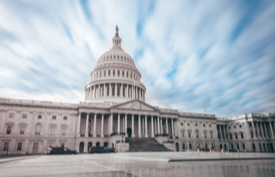The Supreme Court last Friday (June 16) in United States ex rel. Polansky v. Executive Health Resources, Inc. clarified the scope of the Government’s authority to dismiss False Claims Act cases brought by whistleblowers. In an 8 to 1 decision (with Justice Thomas dissenting), the Court held the Government may move to dismiss both during the seal period when it is investigating the case and after the seal when a whistleblower is litigating the case on its own. The Court further held the Government should be given significant deference in moving to dismiss, even when the whistleblower objects, advising district courts to grant the motion absent compelling circumstances.
It is the Supreme Court’s second False Claims Act decision in just over two weeks, having unanimously reversed the Seventh Circuit’s decision in United States ex rel. Schutte v. SuperValu Inc. on June 1. There, the High Court corrected what many had considered a gutting of the statute which allowed defendants to escape liability with after-the-fact excuses for their violations.
Last week’s Polansky decision, in many respects, carried significantly less import than SuperValu. The real question was not whether the Government has the authority to dismiss False Claims Act suits brought by whistleblowers. Afterall, these cases are brought on the Government’s behalf. And even when the Government chooses not to intervene in them, the Government remains the real party in interest. Instead, the question was about the contours of the Government’s authority and how much deference the Government should get when moving to dismiss over the whistleblower’s objection.
Unsurprisingly, the Supreme Court decided both questions in favor of the government. The Court reached its decision through a deep dive into the statutory language, finding it straightforward in providing for the Government’s dismissal authority as long as the Government intervened, whenever that intervention occurs. The Court bolstered its decision by looking to the “Government-centered purpose” of the statute to “vindicate the Government’s interests.” According to the Court, “that interest does not diminish in importance because the Government waited to intervene.”
For essentially the same reasons, the Court was equally deferential to the Government in assessing the standard district courts should look to in whether to grant a motion to dismiss when the whistleblower is against it. In short, the Court held “in all but the most exceptional cases” it should go the government’s way:
A qui tam suit . . . is on behalf of and in the name of the Government. The suit alleges injury to the Government alone. And the Government, once it has intervened, assumes primary responsibility for the action. Given all that, a district court should think several times over before denying a motion to dismiss. If the Government offers a reasonable argument for why the burdens of continued litigation outweigh its benefits, the court should grant the motion.
The Court’s reasoning does not give the Government unfettered discretion to dismiss a whistleblower case as some lower courts have found. The Government still needs “good cause” to intervene after originally declining to join the case, something that might be harder to demonstrate the longer the Government waits to act. And the Government still needs to provide a reasonable basis for why it wants to dismiss the case, again something that might become more difficult the longer the Government allows the whistleblower to litigate the case alone. But no doubt, and to no great surprise, a whistleblower will have an uphill climb in trying to block a Government motion to dismiss.
If there were any real surprises in the decision, it was the portion of the Justice Thomas dissent where he questions whether qui tam actions are even Constitutional under Article II because they allow private individuals to represent the interests of the United States in litigation. In his concurring opinion, Justice Kavanaugh (joined by Justice Barrett) agrees with Justice Thomas that Article II issues are raised by the qui tam provisions and that the Court should consider them in an appropriate case down the road.
The Article II issue was not before the Court. Justice Thomas decided to raise the issue on his own. Nevertheless, defendants will definitely make mischief with this invitation and add Article II challenges in their efforts to dismiss qui tam cases going forward. And given at least three of the justices want to address it, it may only be a matter of time before the Court considers the issue head on.
As to the likelihood of success of an Article II attack, the United States previously weighed in on this issue before the Supreme Court and argued firmly against any Article II challenge. Also, there is very helpful language within the majority decision in Polansky (as well as in the Supreme Court’s 2019 decision in Cochise Consultancy, Inc. v. United States ex rel. Hunt) to fend off any Article II challenge. That may have been exactly what Justice Kagan had in mind in how she authored the majority opinion in Polansky and why she (and five other justices who joined her opinion) did not pick up the Article II gauntlet Justice Thomas threw down.
Even in the unlikely event an Article II challenge were ever to succeed, Congress almost certainly would step in and take whatever steps were necessary to modify the statute accordingly given the strong bi-partisan support this whistleblower program has always had. And for good reason. The Government has recovered tens of billions of dollars under the False Claims Act over the past twenty-five years, the vast majority of which has come from lawsuits initiated by whistleblowers. Proof positive, if any were needed, of the critical role whistleblowers play in the Government’s fraud enforcement regime. Just as Congress envisioned when it created the statute more than 150 years ago.
Read More
False Claims Act
I Think I Have a Whistleblower Case
Contact Us Confidentially
Read Supreme Court Clarifies Government’s Right to Dismiss False Claims Act Cases Brought by Whistleblowers at constantinecannon.com






Leave A Comment